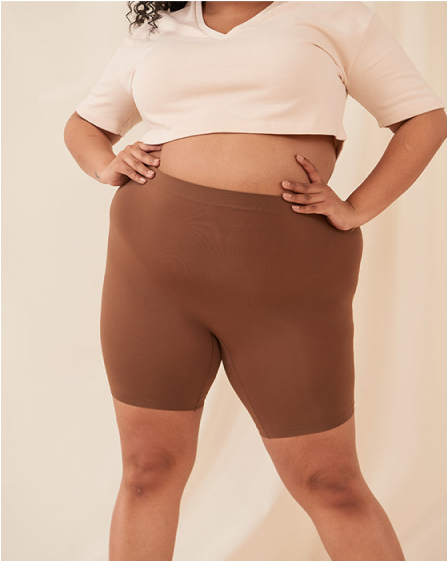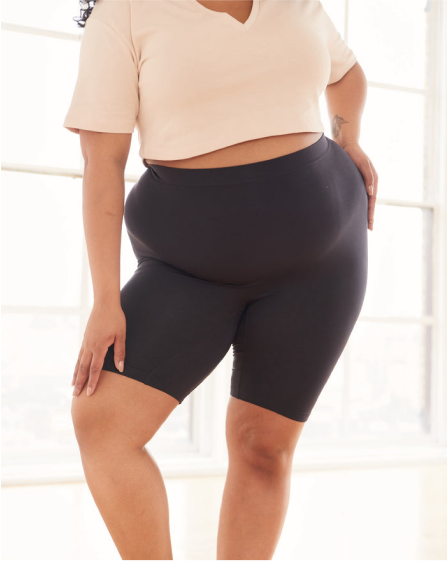Choosing the right fabric for underwear can be overwhelming with so many options out there. Cotton and nylon are two of the most popular choices, each offering unique benefits when it comes to comfort, look and feel. The fabric you choose impacts everything from comfort to durability and even the environmental impact. Let’s break down the key differences between cotton vs nylon underwear to help you find the perfect fit. Here’s the scoop on nylon vs cotton.
Nylon Underwear vs Cotton Pros and Cons
1. Comfort
Cotton:
Cotton is soft, breathable and hypoallergenic, making it a go-to for sensitive skin. Its natural fibers offer a plush, cozy feel that’s perfect for all-day comfort. However, cotton’s lack of elasticity can mean less support and a looser fit, which might result in bunching or shifting under tight clothing.
Nylon:
Nylon is lightweight, smooth and offers a second-skin feel, making it perfect for high-movement activities like exercising or dancing. Its stretch ensures a snug, supportive fit. However, because it’s synthetic, it may not be the best choice for those with sensitive skin, as it can sometimes cause irritation.
Our Cotton shorts combine the best of both cotton and nylon, offering the softness you love with the support you need. Seamless and featuring a knit-in crotch, these shorts feel like underwear but provide the comfort of a second layer. They stay in place without bunching or rolling down, while also helping prevent chafing.

2. Sustainability
Cotton:
Cotton is typically viewed as a sustainable choice, but its environmental impact can vary based on how it’s produced. Organic cotton, grown without pesticides and using less water, is an eco-friendly option. However, conventional cotton farming is water-intensive and can involve harmful chemicals. Additionally, cotton is biodegradable, giving it a sustainable edge over synthetic fibers in terms of waste management.
Nylon:
Nylon production has a significant environmental footprint. It’s derived from petroleum, a non-renewable resource, and its manufacturing process emits greenhouse gases. Nylon is not biodegradable, making it a long-term waste product. On the upside, there are innovations like recycled nylon, which help to reduce the ecological impact, offering a more sustainable alternative to consumers.
3. Moisture-Wicking
Cotton:
Cotton is highly absorbent, which can be a downside in certain situations. While it wicks away sweat, it tends to hold onto moisture, leaving you with a damp feeling during intense exercise or in humid conditions. This makes cotton less ideal for workouts or hot weather.
Nylon:
Nylon is excellent at moisture-wicking, drawing sweat away from the skin and drying quickly. This makes it a top choice for athletic and performance wear. Nylon underwear keeps you dry and comfortable during high-intensity activities, helping to prevent chafing and discomfort.
4. Appearance
Cotton:
Cotton underwear is often associated with a casual, simple look, and tends to come in a variety of prints and colors with a matte texture. Cotton tends to shrink and lose shape over time, which can also affect its appearance after repeated washing.
Nylon:
Nylon offers a sleek and polished look. Its smooth texture and ability to hold vibrant colors make it a popular choice for stylish, modern designs. Nylon is durable, allowing it to maintain its shape and appearance even after multiple washes. This fabric is thin and seamless, perfect when you don’t want your underwear to show underneath your clothing.
5. Breathability
Cotton:
Cotton is renowned for its breathability. Since it’s a natural fiber, it allows air to circulate more freely, making it an excellent choice for daily wear. Cotton underwear reduces the risk of sweat accumulation and irritation, offering a fresh feel throughout the day. It’s also associated with better vaginal health, its breathability and absorbent nature helping to prevent yeast infections.
Nylon:
Is nylon breathable? While nylon is a synthetic fiber and generally less breathable than cotton, advancements in fabric technology have improved ventilation. Blends and perforations help enhance airflow, but nylon still can’t quite match the natural breathability of cotton.
Both nylon and cotton underwear have their strengths and weaknesses, and the best choice ultimately depends on your needs and preferences. Cotton is ideal for those seeking breathability, softness and sustainability, especially for everyday use and sensitive skin. On the other hand, nylon shines in scenarios requiring moisture-wicking, durability and a polished appearance, making it a go-to for active lifestyles and fashion-forward choices.








